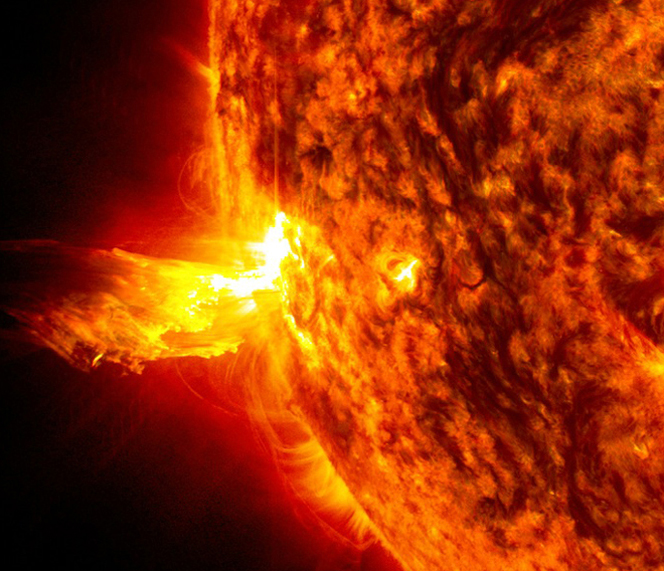A student-designed CubeSat, built by undergraduates from three US universities, is preparing for launch later this month. The small spacecraft will help scientists understand how the Sun’s activity affects space weather and Earth’s upper atmosphere.
The project is a collaboration between the University of New Hampshire (UNH), Sonoma State University (SSU) and Howard University (HU). Their mini satellite, called 3UCubed, will lift off aboard a SpaceX rocket from Vandenberg Space Force Base in California. The launch is planned for 10 November 2025 at 10:19 a.m. PST.
Investigating Solar Wind and the Thermosphere
Once in orbit, 3UCubed will travel through the thermosphere, the region where the International Space Station also orbits. It will measure atmospheric density and track how charged particles flow from space into the upper atmosphere.
This data will help scientists understand how solar wind interacts with Earth’s magnetic field. In turn, it will improve space weather forecasts that protect satellites, power grids and GPS systems from major solar flare events.
Students will compare their data with findings from NASA’s Interstellar Mapping and Acceleration Probe (IMAP) mission. Together, the results should reveal how the thermosphere reacts to solar wind and electron precipitation.
Hands-On Experience That Builds Futures
For the 70 undergraduate students involved, this five-year project has been both a technical challenge and a major career opportunity.
“This is an amazing opportunity for students to not only get hands-on technical experience but to also collaborate with other undergraduates across the country to design and build an entire space mission,” said Noé Lugaz, research professor in physics and astronomy at UNH.
The students handled every stage of spacecraft development. They created software, soldered wires, performed orbit analyses, and managed budgets. UNH led the work on instruments and payload software, while SSU developed the main ground station and communications systems. HU worked with UNH to build the backup ground station.
From Classroom Project to Career Launch
Former team member Alex Chesley, who studied mechanical engineering at UNH, said the project helped shape his professional path. “It was fascinating to learn about so many new subjects about space science and instrumentation that I had never studied before,” he said.
Chesley designed the first CAD model of the satellite and helped define the control system. He now works as a configuration engineer at STS Aerospace in Laconia, New Hampshire, developing fluid systems for the space and defence industries.
Computer science graduate Haley Joerger from SSU also credits the experience for her career success. “The mentorship I received was instrumental in building my confidence and guiding my development,” she said. “Working on the CubeSat hardware provided me with valuable experience in instrumentation.”
Community Partnerships on the Ground
The mission has also reached beyond the universities. SSU students teamed up with local amateur radio operators and Scout groups to build a secondary ground station. It will allow them to communicate directly with the satellite once it is in orbit.
More Than a Satellite
As 3UCubed prepares for launch, it represents more than just scientific research. It carries the hopes and achievements of dozens of students who have turned classroom lessons into real-world space exploration.
Its name, 3UCubed, symbolises the partnership between the three universities and their shared goal of uplifting undergraduate research into orbit.
